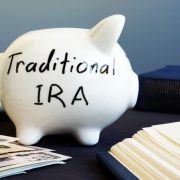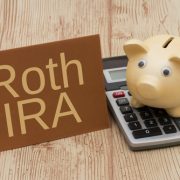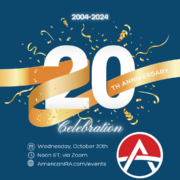The Process of Converting a Traditional IRA Into a Self-Directed Roth IRA
Interested in converting to a Roth IRA? We understand the reasons why. A Roth IRA uses after-tax money, which means you’ll have all sorts of flexibility with the dollars you keep in your retirement account. And with a Self-Directed Roth IRA in your pocket, you can make all sorts of retirement investments that go beyond the scope of traditional brokers: real estate, precious metals, private companies, and even private notes. It’s a flexible way to invest in retirement on your terms.
But what happens if you convert a Traditional IRA—funded using before-tax dollars—to a Self-Directed Roth IRA? Before you begin the process, here’s what you’ll need to know.
Key Considerations for Self-Directed Roth IRAs
Take a look at your current retirement portfolio. Look at the assets you hold. The fees you’re paying. Whether the benefits of a Roth IRA even align with your long-term goals, or whether moving the funds over might be more trouble than they’re worth. We’re not looking to discourage you from making this leap, of course, but you do have to go in with the right expectations.
And for many, the key expectation is that moving from a Traditional IRA to a Roth IRA will trigger a taxable event. After all, putting before-tax dollars into a Traditional IRA means you haven’t paid taxes on that money yet. The IRS isn’t going to let you simply move that money into an after-tax account without some tax considerations in place.
The key consideration here is understanding your individual tax situation. If the amount you convert gets added to your taxable income for the year, is that a good choice because you expect it not to push you into a higher tax bracket? It may be. Consult with a tax accountant to help you understand the consequences of creating this taxable event.
From Traditional to Self-Directed: How to Make the Change Happen
If you’re okay with the tax consequences and have run it by your accountant first, you may be ready to make the change. Now it’s time to select a Self-Directed IRA custodian.
Why do you need to work with a custodian? Simple. A Self-Directed Roth IRA allows you to invest in a wider array of assets, including real estate, precious metals, and private equity. To convert, you’ll need to work with a custodian who specializes in Self-Directed IRAs. Research custodians carefully. Consider their fees, investment options, and customer service. Look at the experience of the team behind them, and make sure that Self-Directed IRAs aren’t a recent development at this firm. Ideally, they’ll have been helping clients with Self-Directed IRAs for years.
Once you’ve chosen a custodian, you’ll need to open a Self-Directed Roth IRA account. This involves completing the necessary paperwork and moving funds from your Traditional IRA to your new account. Your custodian will guide you through this process and help ensure compliance with IRS regulations. Remember to prepare for the taxable event here, and make sure that you comply with the rules for moving money from account to account.
If it sounds like a lot of paperwork, keep in mind that for many, the move to a Self-Directed Roth IRA is worth it. Roth IRAs have more flexibility and freedom, and with self-direction, you’ll have the option to invest more on your terms. The only question is: once you’re ready to roll with a Self-Directed Roth IRA, what do you do with it? The options are vast.
Interested in learning more about Self-Directed IRAs? Contact American IRA, LLC at 866-7500-IRA (472) for a free consultation. Download our free guides or visit us online at www.AmericanIRA.com.









